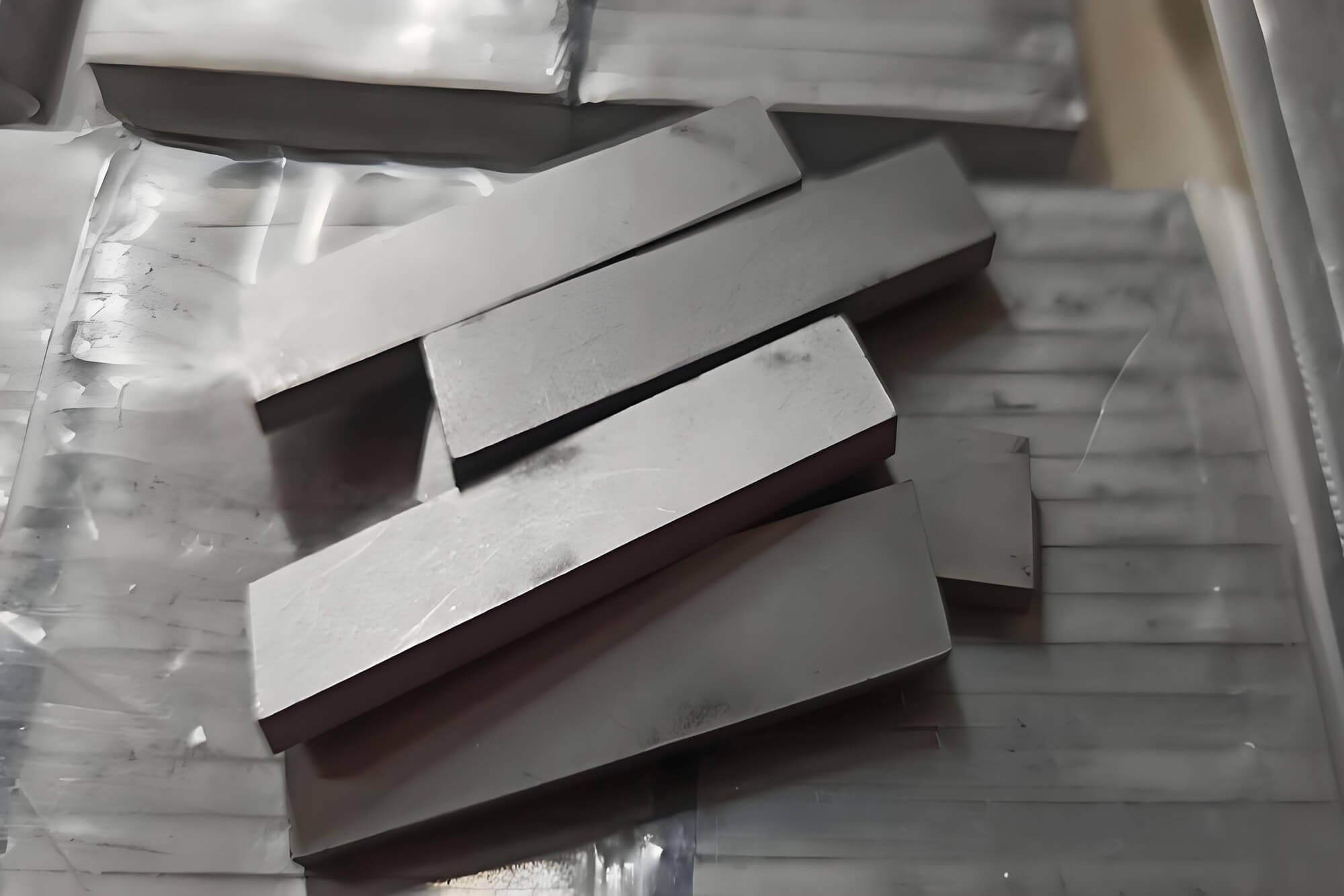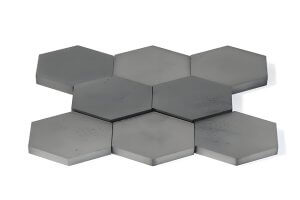I. Introduction: The Powerhouse Behind Precision CNC Machining
In the fast-paced world of precision manufacturing, where aerospace components demand flawless tolerances and medical implants save lives, one material reigns supreme: tungsten carbide. But what is carbide? Known simply as “carbide” on the shop floor, this extraordinary composite is the heart of modern CNC machining. It slices through the toughest metals with speed and accuracy that transform production lines. As a CNC machinist with over a decade in the field, I’ve seen firsthand how what is carbide translates into real-world results—tools that outlast and outperform, driving efficiency and profitability.What is carbide, and why does it matter? This material, with hardness rivaling diamond, withstands the intense heat and pressure of high-speed CNC machining. This guide dives deep into what is carbide, crafted for machinists, engineers, and shop owners. From its atomic structure to its practical applications, we’ll explore how tungsten carbide is made, why it outperforms High-Speed Steel (HSS), and how innovations are shaping its future. Drawing from my experience on the shop floor, I’ll share insights and real-world examples to help you leverage what is carbide to elevate your CNC machining operations.
II. Deconstructing Carbide: The Science Behind Its Strength
The term “carbide” isn’t just a buzzword—it’s a carefully engineered composite that powers CNC machining. To understand what is carbide, we need to unpack its composition and the synergy of its components. Its unmatched hardness and durability come from blending a ceramic with a metal, a process I’ve seen yield game-changing tools in my years machining everything from titanium to hardened steels.
A. What is Carbide (WC)? The Chemical Foundation
At its core, what is carbide? Tungsten carbide (WC) is an inorganic compound of equal parts tungsten (W) and carbon (C). In its raw state, it’s a fine, gray powder—far too brittle for the rigors of CNC machining. I remember my first encounter with raw WC powder during a factory tour; it looked unassuming, like dust, yet it’s the starting point for tools that shape industries. To become the robust material used in CNC machining, this powder is combined with a metallic binder, transforming what is carbide into a composite that’s both hard and resilient.
B. The Binder’s Role: Crafting Cemented Carbide
To overcome WC’s brittleness, manufacturers mix it with a binder—typically cobalt (Co), sometimes nickel (Ni). This blend is sintered to create cemented carbide, a material that balances ceramic hardness with metallic toughness. In my shop, I’ve used cemented carbide inserts that withstand punishing interrupted cuts on stainless steel, thanks to the cobalt “glue” holding the WC grains together. Understanding what is carbide in this context reveals why it’s so versatile for CNC machining tasks, from delicate finishing to aggressive roughing.
C. Balancing Hardness and Toughness
What is carbide when it comes to performance? It’s a material tailored at the powder stage. By adjusting cobalt content (3%–30%) and WC grain size, manufacturers create grades optimized for specific CNC machining applications. I’ve learned this the hard way: early in my career, I used a low-cobalt grade for a roughing job and chipped the tool. Here’s how it works:
- Low Cobalt (3–6%): High hardness, ideal for finishing abrasive materials like composites. These grades shine in precision CNC machining but are prone to chipping.
- High Cobalt (10–25%): Tougher, better for roughing or unstable setups, though they wear faster.
- Grain Size: Finer grains boost hardness; coarser grains enhance toughness.
This balance is why what is carbide matters—it’s not one-size-fits-all but a customizable solution for CNC machining challenges.
D. Key Properties for CNC Machining
What is carbide in terms of its physical traits? Its composite structure delivers properties that make it a CNC machining powerhouse. I’ve relied on carbide’s stiffness to maintain tight tolerances on aerospace parts, but its density demands robust machines. Here’s a breakdown:
Table 1: Properties of Cemented Tungsten Carbide
| Property | Typical Value | Significance in CNC Machining |
| Hardness | 86–93 HRA; ~9.0–9.5 Mohs | Near-diamond hardness enables cutting hardened steels in high-speed CNC machining. |
| Density | ~15.7 g/cm³ | Twice steel’s density, reducing vibration but requiring high-torque CNC machining setups. |
| Stiffness | 530–700 GPa | Minimizes deflection, ensuring precision and smooth finishes in CNC machining. |
| Compressive Strength | Up to 6000 MPa | Resists crushing forces at the cutting edge during intense CNC machining operations. |
| Melting Point | ~2,870°C | Retains hardness at high temperatures, critical for high-speed CNC machining. |
| Thermal Conductivity | ~85–110 W/(m·K) | Dissipates heat, protecting tools during prolonged CNC machining runs. |
III. The Art of Creation: Manufacturing Tungsten Carbide
What is carbide in production? It’s a product of powder metallurgy, a process I’ve seen in action at toolmaking facilities. Unlike steel, carbide can’t be cast due to its decomposition below its melting point. This method allows precise control, making what is carbide a customizable material for CNC machining.
- Raw Material Preparation: Tungsten and carbon powders are heated at 1,400–2,000°C to form WC powder, then milled with cobalt for uniformity. I once watched this milling process—it’s meticulous, ensuring every particle aligns for optimal performance.
- Compacting: The powder is pressed into a “green compact,” a fragile precursor to the final tool. Pre-sintering at 600–800°C allows shaping complex features like coolant holes, a game-changer for deep-hole CNC machining.
- Sintering: At over 1,400°C, cobalt melts, binding WC grains. The part shrinks 18–20%, becoming dense and hard. I’ve held a sintered insert fresh from the furnace—its weight and solidity are striking.
- Post-Processing: Hot Isostatic Pressing (HIP) eliminates microscopic voids, boosting strength. This step saved a batch of tools I used on a titanium job, preventing premature failures.
IV. Carbide in Action: The Heart of CNC Machining
What is carbide in the CNC machining workshop? It’s the workhorse behind high-speed, precise cutting. I’ve swapped out HSS for carbide on countless jobs, slashing cycle times and boosting tool life. Carbide’s properties drive innovation in CNC machining, enabling feats like machining superalloys or achieving mirror-like finishes.
Why Carbide Excels in CNC Machining
High-Speed Capability: Its “red hardness” supports cutting speeds 4–7 times faster than HSS, critical for high-volume CNC machining. I’ve cut cycle times by 30% on steel parts using carbide.
Tool Life: Wear resistance extends life 5–80 times longer than HSS, reducing downtime. On a recent aluminum job, my carbide inserts lasted weeks, not days.
Versatility: Carbide tackles hard materials like titanium or composites, which I’ve machined for aerospace clients with zero defects.
Precision: Its stiffness minimizes deflection, ensuring tight tolerances. I rely on this for medical parts where a micron matters.
Common Carbide CNC Tool Types
- Milling Tools: End mills (flat for slots, ball nose for 3D contours, roughing for rapid removal) and face mills with inserts excel in CNC machining tasks.
- Turning Tools: Indexable inserts, replaceable tips in various grades, are cost-effective. I swap inserts mid-job without resetting, saving hours.
- Holemaking Tools: Solid carbide drills and reamers ensure precision in high-speed CNC machining. Internal coolant channels have been a lifesaver on deep holes.
What is carbide when shaping it? Its hardness requires diamond grinding or EDM, processes I’ve seen produce razor-sharp edges for precision CNC machining.
V. Tungsten Carbide vs. High-Speed Steel: A Machinist’s Perspective
What is carbide compared to HSS? It’s a choice between performance and cost, one I’ve wrestled with on countless projects. Early in my career, I stuck with HSS for its affordability, but carbide’s efficiency won me over for production runs. Here’s how they stack up for CNC machining:
Table 2: Tungsten Carbide vs. HSS
| Feature | Tungsten Carbide | High-Speed Steel (HSS) | Key Takeaway |
| Hardness | 89–93 HRA | ~62–65 HRC | Carbide cuts harder materials in CNC machining. |
| Hot Hardness | Retains up to ~1,000°C | Softens at ~600°C | Carbide enables high-speed CNC machining. |
| Toughness | Brittle, chips under shock | Tough, impact-resistant | HSS suits unstable CNC machining setups. |
| Cutting Speed | 2–5x faster than HSS | Slower | Carbide slashes cycle times in CNC machining. |
| Tool Life | 5–20x longer | Shorter | Carbide reduces downtime in CNC machining. |
| Applications | Hardened steels, high-volume | Mild steels, low-volume | Match tool to CNC machining needs. |
| Initial Cost | High (2–4x HSS) | Low | Carbide saves in high-volume CNC machining. |
I once ran a low-volume brass job with HSS to save costs, but for a high-volume steel run, carbide’s longevity paid off tenfold. What is carbide in this debate? It’s the choice for efficiency in demanding CNC machining.
VI. Enhancing Carbide: Coatings and Micro-Geometry
What is carbide with modern enhancements? Its substrate, paired with coatings and micro-geometry, transforms good tools into great ones. I’ve seen coated carbide inserts triple tool life on tough jobs.
A. Advanced Tool Coatings
Coatings (3–12 µm) boost life 3–5 times and speeds by 20–70% in CNC machining.
- CVD (Chemical Vapor Deposition): Thick coatings like Al₂O₃ excel in turning steels. I use CVD-coated inserts for cast iron, where crater wear is a challenge.
- PVD (Physical Vapor Deposition): Thinner coatings like TiAlN suit finishing and sticky materials like titanium. They’ve saved me on precision CNC machining jobs.
B. Micro-Geometry
Edge Preparation: Honed edges prevent chipping. I’ve found a slight hone makes all the difference on interrupted cuts.
Chipbreakers: These curl chips into manageable pieces, critical for safety in CNC machining. I once avoided a workpiece scratch thanks to a well-designed chipbreaker.
VII. The Future of Carbide: Innovations for CNC Machining
What is carbide in the future? It’s evolving to meet CNC machining demands. I’ve seen glimpses of these trends at trade shows, and they’re game-changers.
- Nano-Grain Carbides: Finer grains combine hardness and toughness, ideal for precision CNC machining. I tested a nano-grain end mill, and it lasted 20% longer.
- Additive Manufacturing: 3D-printed tools with complex cooling channels improve CNC machining efficiency. I’m excited to try these on deep-hole jobs.
- Smart Tools: Sensors monitor wear, adjusting CNC machining parameters in real time. This could prevent the tool failures I’ve faced on long runs.
- Recycling: Reclaiming tungsten reduces costs and environmental impact. I send worn tools to recyclers, knowing they’ll return as new carbide.
VIII. Real-World Insights: My Experience with Carbide
What is carbide to a machinist like me? It’s a partner in precision. On a recent aerospace project, I machined titanium with carbide inserts, hitting tolerances of ±0.005 mm. The job would’ve taken twice as long with HSS. Another time, I used a PVD-coated carbide drill for stainless steel, avoiding the chatter that plagued HSS attempts. These experiences underscore what is carbide: a material that turns challenges into opportunities in CNC machining.Choosing the right carbide grade is critical. I once selected a high-cobalt grade for a roughing job, only to realize a harder grade would’ve lasted longer. Now, I consult resources like want.net to research grades and coatings, ensuring I match the tool to the job. Platforms like want.net offer insights into the latest carbide tools, helping machinists like me stay ahead in CNC machining.
IX. Conclusion: Unlocking Carbide’s Potential in CNC Machining
What is carbide? It’s a precision-engineered composite that powers CNC machining. From its WC grains and cobalt binder to its coatings and micro-geometry, every aspect is designed for performance. My years on the shop floor have shown me that what is carbide is more than a material—it’s a solution to CNC machining challenges. Whether cutting hardened steel or optimizing production, carbide delivers unmatched results.
To harness what is carbide, select tools tailored to your CNC machining needs. Consult suppliers or platforms like want.net to explore grades and innovations. By understanding what is carbide and applying it strategically, you’ll achieve higher productivity, precision, and profitability in your CNC machining operations.
FAQ:
1. What is carbide, and why is it critical for CNC machining?What is carbide? It’s tungsten carbide (WC), a super-hard compound of tungsten and carbon, typically combined with a cobalt binder to form cemented carbide. In CNC machining, its near-diamond hardness and ability to withstand high temperatures make it indispensable. I’ve used carbide tools to cut hardened steel at speeds that would ruin HSS, slashing cycle times and boosting precision in CNC machining projects.
2. Is carbide the same as cemented carbide?What is carbide in technical terms? In CNC machining, “carbide” refers to cemented carbide—a composite of tungsten carbide powder sintered with a binder like cobalt. Pure carbide powder is too brittle for practical use, but cemented carbide offers both hardness and toughness. I’ve relied on cemented carbide inserts for stainless steel turning, where they handle heat and wear far better than other materials.
3. What are the main applications of carbide in CNC machining?What is carbide used for in CNC machining? It powers tools like milling cutters, turning inserts, and drills. For example, end mills shape complex profiles, indexable inserts tackle lathe work, and carbide drills produce precise holes. In an aerospace job, I used a carbide drill with coolant channels for titanium, achieving flawless holes and superior finishes compared to HSS.
4. How does carbide compare to High-Speed Steel (HSS) in CNC machining?What is carbide versus HSS? Carbide is much harder (89–93 HRA vs. 62–65 HRC) and retains its edge at higher temperatures, enabling 2–5x faster cutting speeds and 5–20x longer tool life. For high-volume CNC machining, I choose carbide to minimize tool changes, though HSS is better for low-volume jobs or less rigid setups due to its toughness.
5. How do I choose the right carbide grade for CNC machining?What is carbide grading? Grades vary by cobalt content (3–30%) and grain size. Low-cobalt grades (3–6%) excel in finishing abrasive materials, while high-cobalt grades (10–25%) suit roughing. I once used a low-cobalt grade for roughing and faced chipping; now, I check resources like want.net to match grades to specific CNC machining tasks, ensuring optimal performance.
6. How do coatings enhance carbide tools in CNC machining?What is carbide with coatings? Coatings like CVD (e.g., Al₂O₃) or PVD (e.g., TiAlN) add a thin layer to boost wear resistance and heat protection, extending tool life 3–5x and speeds by 20–70%. In CNC machining titanium, I’ve used PVD-coated carbide tools to reduce chip welding, ensuring smoother cuts and better surface quality.
Reference:
https://www.britannica.com/science/carbide
https://en.wikipedia.org/wiki/Carbide
https://en.wikipedia.org/wiki/Tungsten_carbide
https://www.sciencedirect.com/topics/materials-science/carbide
Other Articles You Might Enjoy
- Cemented Carbide: The Material Science and Application Strategies Driving High-Performance CNC Machining
Part 1: The Material Science of Cemented Carbide: The Core of CNC Machining As a machinist with 15 years of experience, I’ve come to appreciate cemented carbide as the unsung…
- Silicon Carbide and CNC Machining: A Comprehensive Technical Analysis of Materials, Processes, and Applications
Introduction Silicon carbide (SiC) stands as a pinnacle of advanced ceramics, engineered to thrive in environments that push materials to their limits. Its extraordinary hardness, thermal resilience, and chemical stability…
- Beyond Steel: The Science and Strategy of Carbide Drill Bits in Modern CNC Machining
In the high-stakes world of CNC machining, where precision, speed, and cost-efficiency collide, carbide drill bits have become the unsung heroes of high-performance holemaking. As a machinist with over a…
- The Carbide Scraper in CNC Machining: A Strategic Approach to Precision Finishing and Workflow Optimization
Introduction: Elevating CNC Machining with the Carbide Scraper In the fast-paced world of CNC machining, where precision defines success, the carbide scraper is often misunderstood as a rudimentary tool for…
- Performance, Selection, and Process Optimization of CNC Carbide Burrs in CNC Machining
Introduction: The Transformative Power of Carbide Burrs in CNC Machining In the fast-evolving realm of CNC machining, where precision, automation, and efficiency are paramount, the carbide burr—often referred to as…






